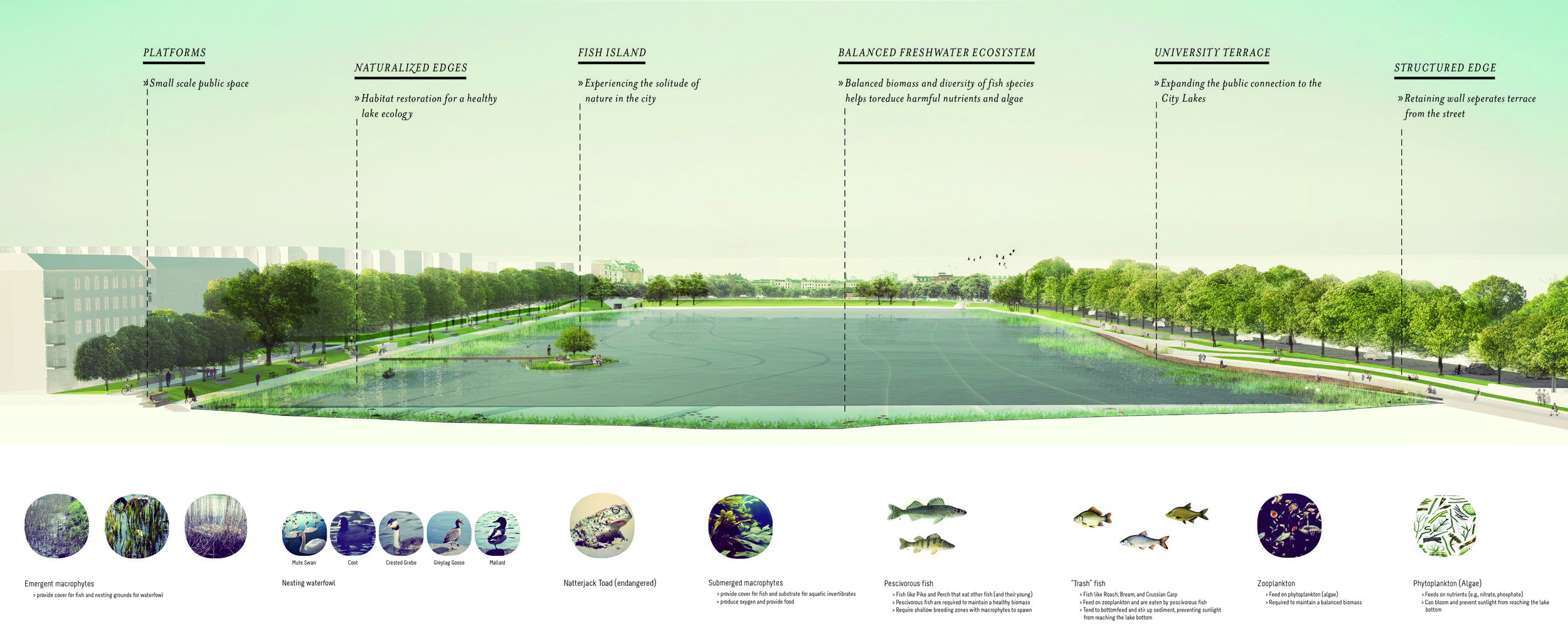
Urban Nature - The Inhabitable Edge
THE CITY LAKES in Copenhagen, Denmark, are a series of man-made lakes between the old center and the surrounding neighborhoods. The lakes hold a strong historic and cultural connection and have been a popular recreational area since the 1800's.
Although the city lakes have been partially remediated they lack the basic necessary natural features to sustain a healthy lake ecology without continuous maintenance. Each spring, algae begins to bloom and by mid-summer the lake surfaces are covered so thickly that the city has to remove algae regularly. Alongside this, the public edges of the lakes are featureless and boring, with ill-defined paths and very few urban spaces.
The lakes hold the potential to become a high quality natural space in the midst of a dense urban centre. My thesis addresses four main goals:
1. To provide a naturalized edge to restore diversity and support the stability of the lake ecology;
2. To soften the transition between the constructed and natural edges through planting and materials;
3. To give a place to stay on the lakes to establish them as a good urban space as well as a natural, recreational area; and
4. To develop a context-sensitive design in the surrounding areas to create a better urban nature
Thesis Blog - Theory, Background & Design Process
Project: Master's Thesis
Institute: Kunstakademiets Arkitektskole
Date: 2011
Supervised by: Merete Anfeldt-Mollerup


New Edge Strategy
Reintroducing naturalized littoral zones to the hard, unproductive edges allows a healthy lake ecosystem to begin flourishing.

Strategic Plan Diagrams
The introduction of new edge conditions to the focus area, Sortedams So.

Guiding Theories

Remediation Section
A new freshwater lake ecosystem from edge to edge.

Vision Plan

Platform Edge Intervention

An edge for people & for Nature

Edge Section Perspective

Platform Edge Vision


Thesis Synthesis

